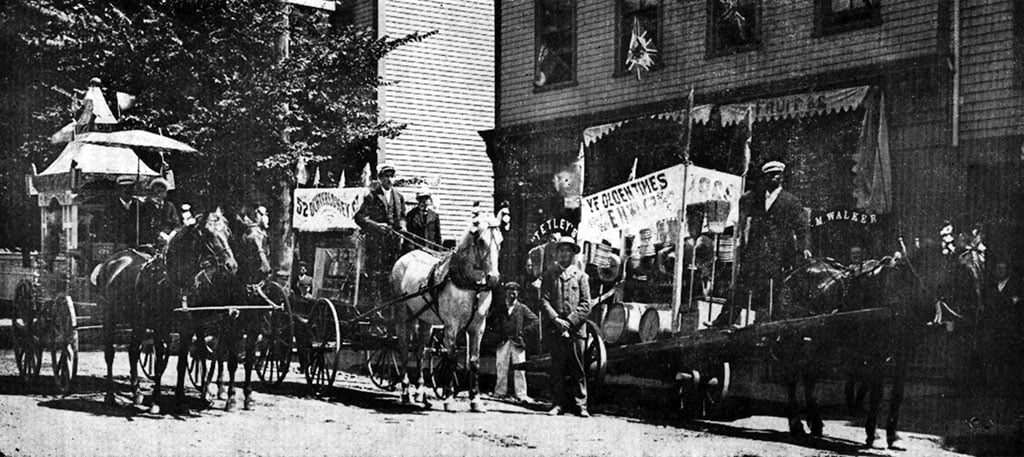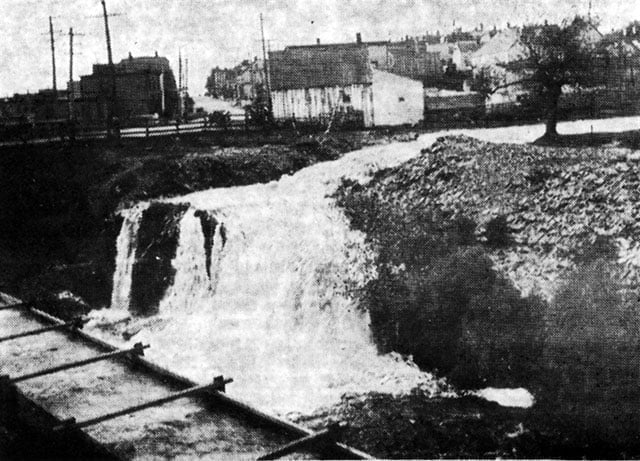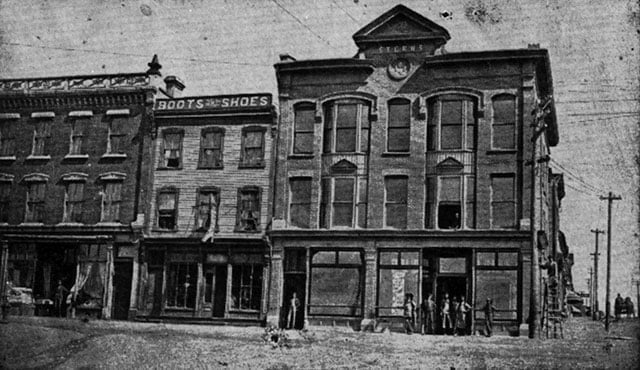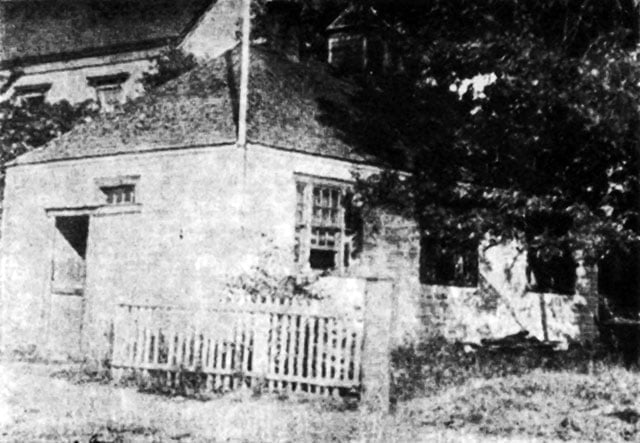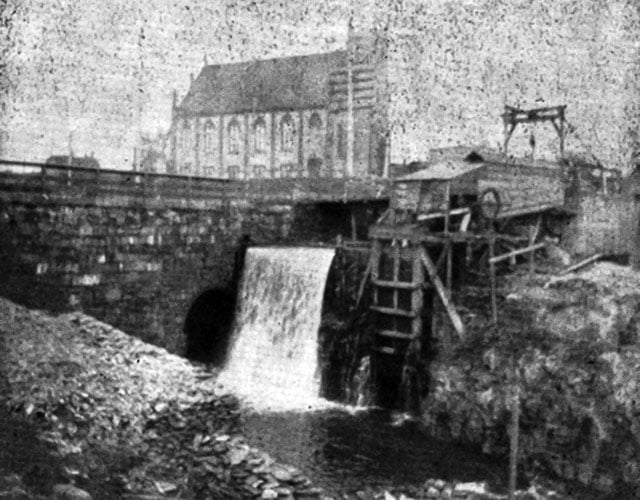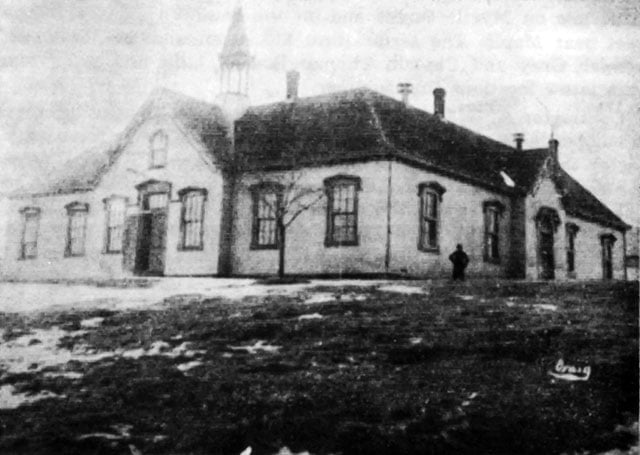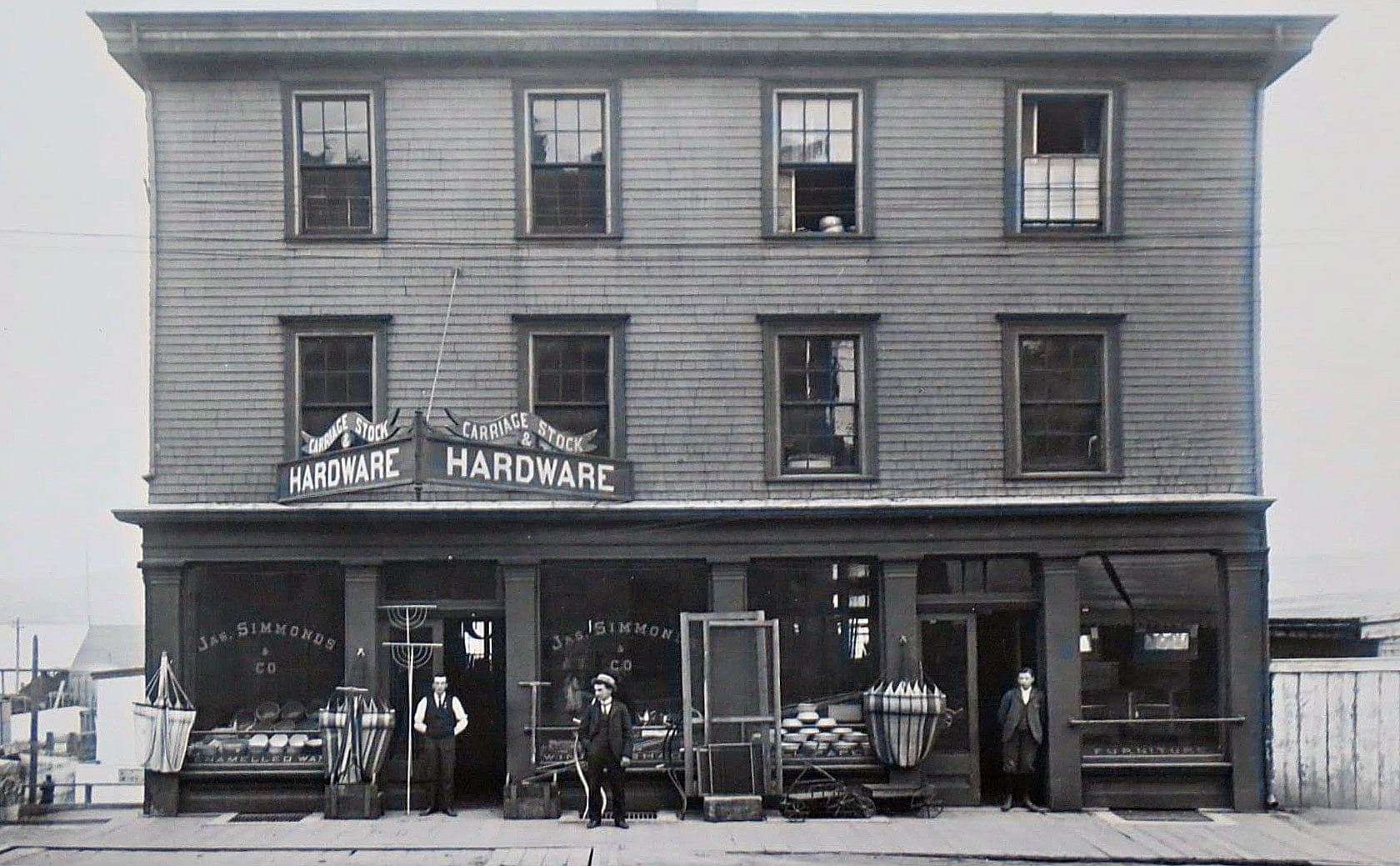From The Story of Dartmouth, by John P. Martin:
The year 1899 marked the beginnings of Empire Day in a few large Canadian centres. Nova Scotia led all other Provinces in placing Empire Day among its legal institutions, and on May 23rd patriotic exercises were conducted in every important school section of this Province. At the celebration in Dartmouth a tree was planted at Greenvale School to honor Joseph Howe, our former townsman.
The Town tax rate for 1899 was $1.30. A public meeting of ratepayers voted down a proposal to borrow $10,000 for a new Town Hall. A few north-end houses got their first taste of lake water when a six-inch main was laid from the railway station to the foot of Best Street to supply Muir’s flour-mill then being built by Mosher, Short and Conrod. From the new main on Shore Road a f-inch iron pipe was run up over Farrell’s field where a continuous flow of water spilled from the outlet into a large low puncheon near the southwest corner of Fairbanks and Best Streets. This public service supplied the neighborhood until the water was extended there a few years later.
On Portland Street in the rear of the present Mayfair Theatre, a flow of oil was noticed oozing up from an excavation made that summer. In Wilson’s Lane, a 24-pound cannon-ball was dug out of another trench; and on the site of the old Tobacco Factory more skull bones were unearthed indicating the presence of a graveyard in early days.
At the Sydney summer carnival the Dartmouth lapstreak crew of Patterson brothers, James Guarde and Arthur Weston captured first place. Charles Patterson and Weston won the double wherry. In the winning 4-oared shell crew of the Lorne Club of Halifax were three Dartmouth men, Albert and Percy Sawler and William Coates. The Ropeworks held a regatta on the harbor in July, and Dartmouth celebrated Natal Day on August 3rd. Later that month the Waverley regatta took place. Nearly five thousand people went out from Halifax and Dartmouth by train and highway.
By this time the Electric Light plant had moved to the Starr Factory in order to utilize the water-power. St. Peter’s Church installed their first electric lights. The price of shaves rose from seven to ten cents. The 55-year-old ferry “MicMac” was advertised for sale. Clifford Young opened a plumbing establishment at 18 Portland Street. James Guarde and James O’Regan commenced a double express-wagon business in competition with S. B. Wambolt. Mrs. E. H. Oland succeeded Mrs. Sarah Lewis as Reading Room caretaker.
R. J. Matheson complained to the Town Council of delay in sounding an alarm when his Mill caught fire. He urged that a telephone be installed at the Engine House. Alexander Lloyd’s 8-acre farm (present Oakdale Crescent) was offered for sale. Robert Stanford’s house was commenced in the Kennedy field at the southeast corner of Lyle Street and Shore Road. Captain Charles Hunter purchased the newly-built Kent house at 190 Portland Street.
Contractor J. A. Webber demolished a small stable at the northwest corner of Victoria Road and Portland Street to erect a high structure for W. H. Walker, son of Henry. On the northeast corner, Salter Dares built a hardware store with his carpenter shop overhead. Later he built the house at No. 6 Victoria Road. Adjoining on the north, F. C. Bauld erected a two-storey carpenter shop. Charles McLean and Charles Gay opened a paint shop on the ground floor. Next north, Mr. Bauld put up his own residence; and at the corner of Queen Street, he erected the dwelling for Alexander McLeod, an engineer on the ferry. Up to that time the only structure on that side was a low stable occupied by John “Popsy” Myers near the location of the Dares house. Settle’s Pond was just a few yards northeasterly, and the land thereabouts had always been considered too swampy for buildings, but now the whole area was transformed.
In 1899 also, the firm of Mosher, Short and Conrod, who had taken over the workshop of the late John T. Walker, built the house at 3 Rose Street for Robert Moseley. The same firm erected for S. B. Wambolt a residence at the northeast corner of Pleasant Street and Prince Albert Road. Previously Mr. Wambolt and B. H. Eaton had offered the Town at different times, the angular jog of field which would have obviated the present blind corner, and also straightened Pleasant Street. The price asked was $100. Councillor G. D. Wilson urged the purchase, but got no support.
The Boer War broke out in October. Dartmouth boys who sailed for South Africa with the First Contingent of Canadian troops were Lieutenant John C. Oland, Alexander Forsyth, Archibald Patterson, Joseph Lenihan, Thomas Harrison, George James, Berton Cameron and Arthur Trider.*
In subsequent months more Dartmouth and Halifax boys enlisted for service in the several Canadian Contingents which sailed from the Dockyard in winter, and always carried a full load of horses purchased around the countryside. Harry Tobin of “Brookhouse” in Woodlawn was in London at the outbreak of war but had been rejected for the army. So he stowed away on a troopship, and upon arrival at Cape Town was accepted into the South African Light Horse under the command of Colonel Byng afterwards Governor-General of Canada. Winston Churchill was attached to this branch as a war correspondent. The London Times 5-volume History of the War in South Africa published in 1909 in its account of Tobin’s achievement says:
“One man, Corporal Tobin, a sailor, scrambled up far ahead of his comrades, and the whole army saw a tiny figure standing alone on the top of the great hill waving his hat as a signal that the enemy had fled”.
(Harry Tobin, born in 1874, spent his last days in Los Angeles. Writing to me in 1951 he reminisced about his seafaring life, of being in the Spanish-American War 1898 and of his experience in South Africa as follows: “I was less than a month in the Squadron when they made me a Corporal, and I could make more mistakes than any other non-commissioned officer in the Regiment. I was 36 times under fire. Was nearly three months in Hospital with enteric fever soon after Ladysmith was relieved, then rejoined the Regiment and crossed the Transvaal with General Buller’s army”.)



